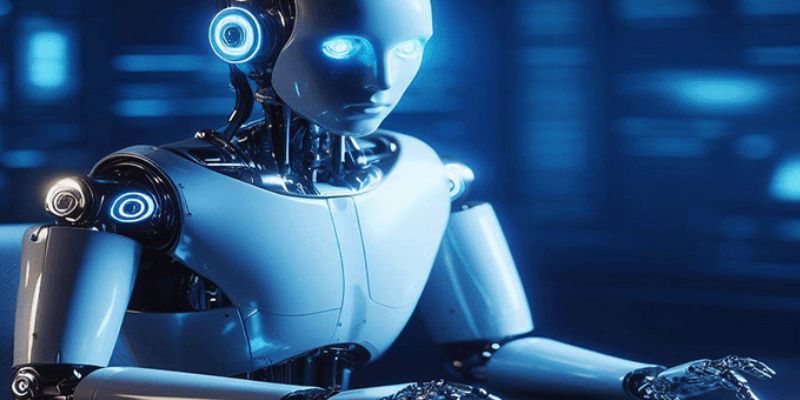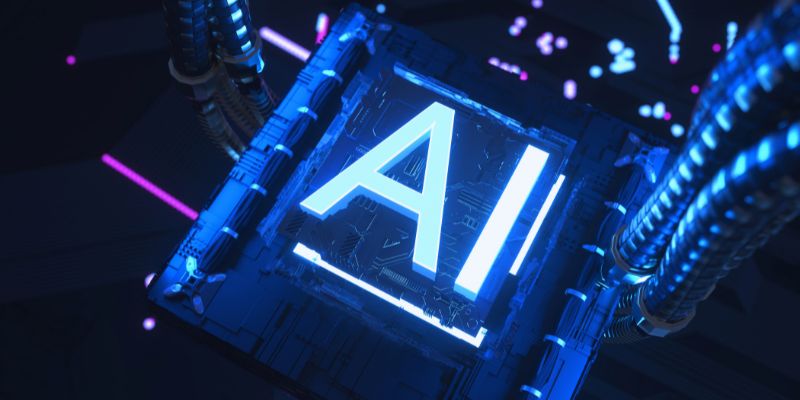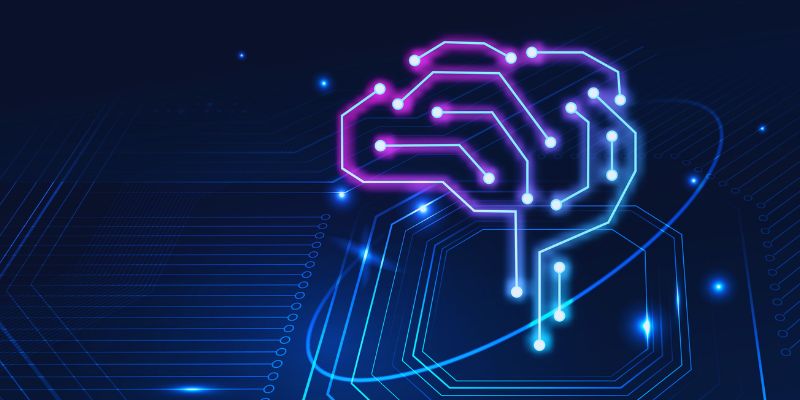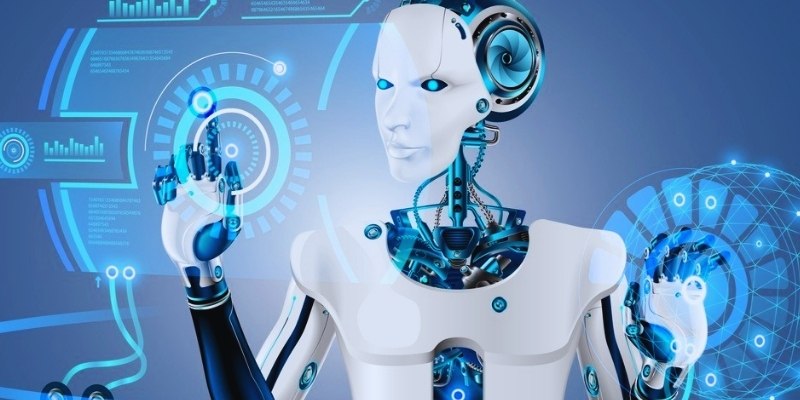An AI-powered assistant can change growing teams' operations. It guarantees better communication, increases production, and helps to automate tedious chores. Modern companies must have clever ideas to manage growing responsibility effectively. Easily scheduling meetings, handling emails, and data analysis is what artificial intelligence assistants can do. Creating an AI-powered assistant calls for great preparation. It entails choosing the correct tools, combining artificial intelligence models, and actuating the helper.
A well-made artificial intelligence assistant reduces handwork and enhances decision-making. This manual analyzes the necessary actions to produce an AI-powered assistant appropriate for your team's requirements. This advice will help you design, grow, and maximize an artificial intelligence assistant, which will assist in raising general team efficiency and process automation.

Steps to build an AI-powered assistant for a growing team:
Here are important steps that help in building an AI Powered assistant for the growing team:
1. Define the Purpose and Goals:
Find out why you want an AI-powered assistant before building one. Name tasks it should handle, such as data input, customer service, or scheduling. Clearly defined objectives enable the development of an assistant fit for corporate demands. Review team challenges to determine how artificial intelligence might be of use. If email management becomes difficult, the assistant should filter, organize, and rank the communications.
Regarding customer service, it should answer questions that are often asked instantly. Knowing the extent guarantees the assistant fits for business operations. List predicted results, such as lowering response times or raising work efficiency. It will direct the development process rather successfully. Clearly defined objectives guarantee that your artificial intelligence assistant will be useful and pragmatic for your company.
2. Choose the Right AI Technologies
Choosing appropriate artificial intelligence tools comes next. Natural language processing (NLP) and machine learning, among other technologies, run AI assistants. While ML increases performance over time, NLP helps one to interpret and create human-like writing. Pre-trained models abound from cloud-based AI companies such as OpenAI, Google AI, and Microsoft Azure. These systems cut development times and ease AI integration. Open-source frameworks such as TensorFlow and PyTorch make custom artificial intelligence development possible. Choose AI technology, keeping your team's needs first. Use robotic process automation (RPA) tools if automation is the aim. If voice recognition is needed, include speech processing driven by artificial intelligence. Choosing the correct mix guarantees flawless AI assistant performance.
3. Collect and Process Data for Training
Accurate replies from artificial intelligence assistants depend on data. Getting quality data guarantees improved performance. Examine both organized and unstructured email, chat log, and report data. An assistant gets smarter, and the more relevant the info is. Data processing entails organizing, labeling, cleaning, and correctly classifying data. It enables artificial intelligence to make better decisions by grasping trends. Using this data, machine learning systems create replies and accurate predictions. Handle delicate material in such a way that data privacy is maintained. User data should be safeguarded via access limits and encryption. High-quality data-based training of an artificial intelligence model improves dependability and efficiency. Developing a reliable AI-powered assistant depends on this stage.
4. Develop the AI Assistant with User-Friendly Features
An AI-powered assistant's design and utility ought to be easily understandable. A competent assistant should offer straightforward navigation, quick replies, and easy access. Create an understandable interface first. If it is a chatbot, guarantee concise messages and fast responses. For voice assistants, apply natural dialogue flows. Interactive AI solutions are created with AI tools like IBM Watson, Rasa, or Dialogflow. Current solutions like Slack, Microsoft Teams, or Google Workspace improve usability and busing integration. The artificial intelligence helper should integrate quite naturally into daily routines. Testing several aspects guarantees the assistance satisfies team requirements. A well-made artificial intelligence assistant increases acceptance and involvement.
5. Train and Improve AI Performance
Teaching an assistant driven by artificial intelligence is never-ending. It improves with increasing interactions it handles. Use machine learning methods to hone answers and raise accuracy. Make corrections using feedback loops. Let the assistant manually correct if she misinterprets a question. AI models learn and adapt better this way. Frequent upgrades guarantee the assistant's relevance to evolving corporate needs. Track AI performance with statistics. Track response times, accuracy rates, and user comments. That clarifies regions needing development. Better support and efficiency for teams come from an always-changing artificial intelligence helper.

6. Integrate AI Assistant into Workflows
An artificial intelligence assistant should blend very well with current procedures. Link it with basic corporate tools such as mail clients, task management apps, and CRM systems. Simplifying processes depends much on automation. If the assistant sets up meetings, they should match calendars. Should it control emails, it should interact with inbox settings. A well-integrated artificial intelligence assistant increases output and lessens hand work. Guarantee flawless cooperation between artificial intelligence and human teams. Workers ought to know how to make good use of the assistance. Giving teams training sessions enables them to implement AI-driven solutions quickly. Correct integration guarantees optimal effectiveness.
7. Ensure Security and Compliance
Using AI assistants gives security first importance. Strong security systems must be in place since artificial intelligence handles private information. Use encryption to guard the data that is sent and kept. Just restrict artificial intelligence access to required information. Role-based rights help to regulate data exposure. Following industry standards is vital. Use GDPR, HIPAA, or another pertinent data protection rule. Frequent security audits help to find weaknesses. A safe artificial intelligence assistant efficiently safeguards corporate data and develops confidence.
8. Optimize and Scale the AI Assistant
Constant optimization guarantees long-term efficiency once implemented. To stay performing, artificial intelligence models must be routinely updated. Examine user interactions to find places needing work. If the assistant finds difficulty completing particular jobs, improve training data. Change machine learning algorithms to improve response accuracy. Scaling artificial intelligence helpers means increasing their capacity. Introduce sophisticated capabilities over time, starting with simple traits. That can call for sophisticated analytics, multi-language support, or speech recognition. Optimizing and scaling guarantees the AI assistant stays valuable as the company expands.
Conclusion:
Creating an AI-powered assistant for expanding teams increases production, automates processes, and improves efficiency. Following the correct procedures guarantees flawless application of artificial intelligence. Specify objectives, select appropriate artificial intelligence tools, and equip the assistant with excellent data. Effective AI solutions depend on their integration with corporate technologies. Compliance and security guard data protection. Constant optimization enables artificial intelligence assistants to change with the times in corporate requirements. A well-built artificial intelligence-powered assistant speeds up company development and streamlines team cooperation. AI-driven process automation helps companies to keep ahead and improve productivity.










